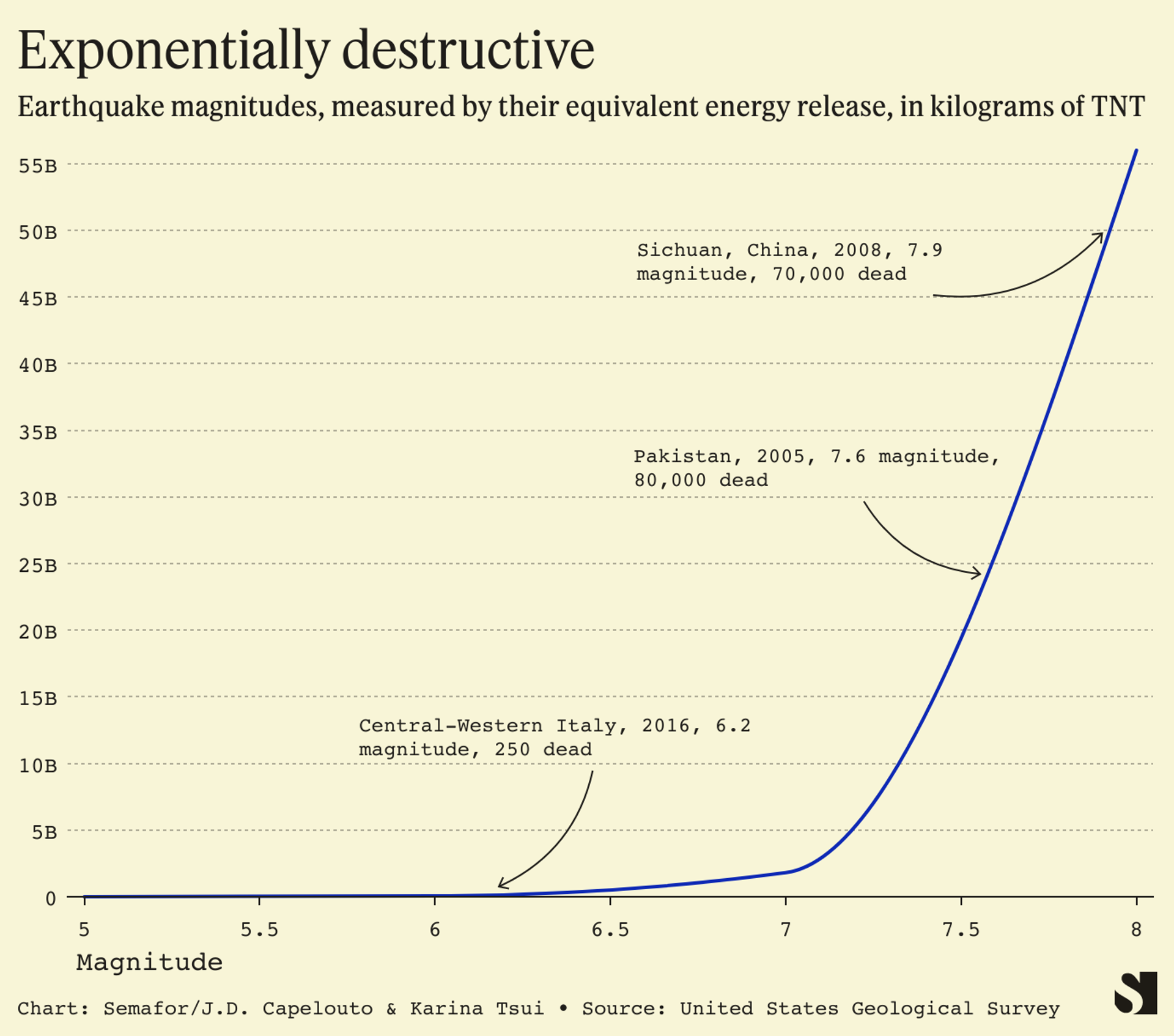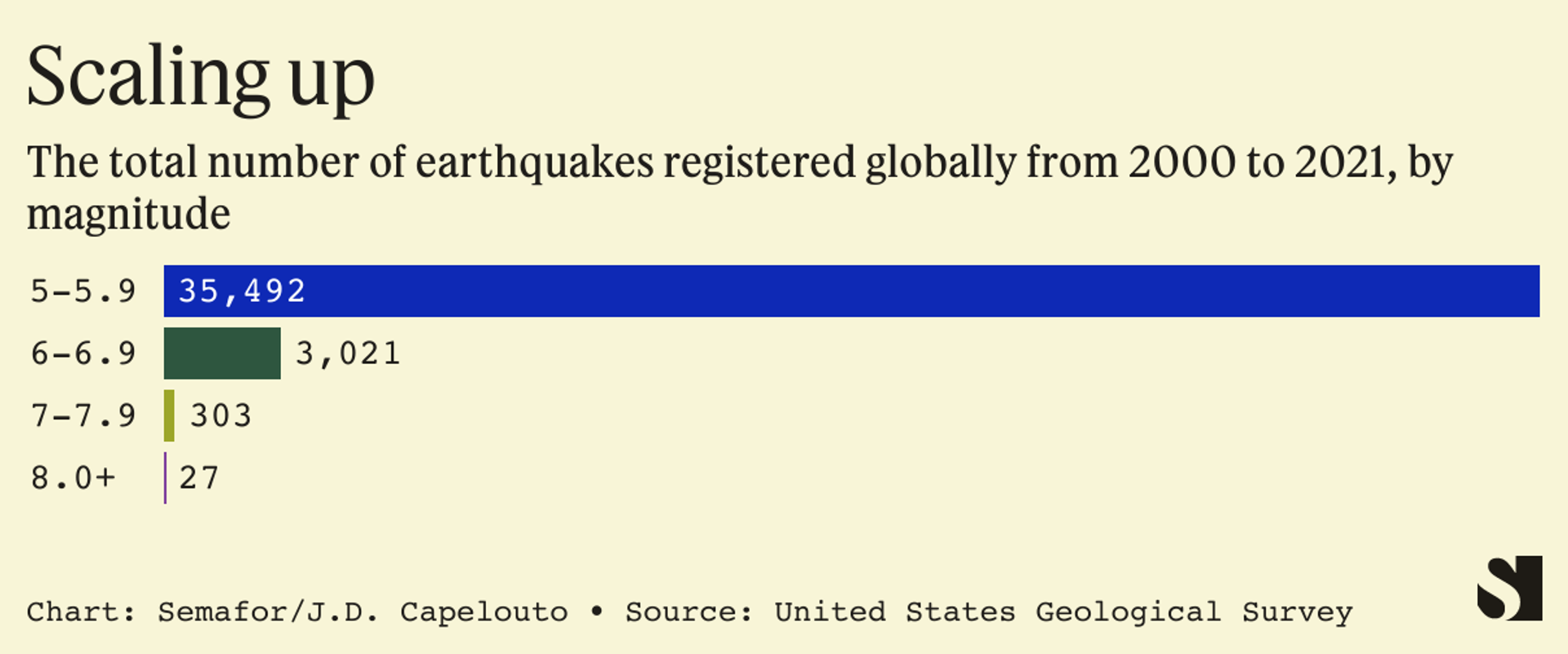The News
Turkey and Syria were rocked by a pair of deadly earthquakes Monday, with over 3,400 people killed and the death toll expected to rise significantly.
The quakes were registered at magnitudes of 7.8 and 7.5, according to the United States Geological Survey, which points out that the measurement of earthquake sizes is a “well known, but not well understood, concept.”
The earthquake measurement system used by the USGS, a version of which was first developed by Charles Richter in the 1930s, shows why a 7.8-magnitude earthquake is so much worse than even a 7.0 rumble.
Know More
The system used to measure the magnitude of earthquakes uses a logarithmic scale, meaning a one-figure jump on the scale causes a tenfold increase in the resulting intensity. The USGS uses the “Moment Magnitude scale,” an updated version of the outdated Richter scale.
According to the USGS, a 7.0 quake is roughly equivalent to the energy release of 1.8 billion kg of TNT. A 7.8-magnitude earthquake is 15.9 times stronger.
And a 7.0-magnitude earthquake is 1,000 times stronger than a 5.0-magnitude quake.

For context, a 7.0 earthquake creates more explosive energy than the atomic bomb dropped on Hiroshima, according to the USGS. And a 7.8-magnitude quake is equivalent of the explosive energy created by the eruption of Mount St. Helens. It is likely to cause “large loss of life” and severe economic impact, the USGS says.
Step Back
The more intense the earthquake, the more uncommon it is. Smaller earthquakes, like those with a magnitude of 2, happen hundreds of times each day.

Some of the most dangerous earthquakes have resulted in thousands of casualties and mass displacement, but experts say that the scale of the damage is usually determined by the depth of tremors, how buildings near epicenters are designed, and population density.
In 2008, Indian and Eurasian tectonic plates along the Longmenshan fault line in southwestern China collided and moved the earth in two sections. The quake was detected only 6 miles beneath the earth’s surface, therefore causing irreparable damage near the quake’s epicenter in Sichuan province.
The deadliest earthquake in Pakistan lasted 60 seconds — double the average length of a typical quake. It shook the Kashmir region in 2005, sending rugged terrain from the Himalayas down the valley, and leaving more than 80,000 dead.
At least 250 people were killed in a 6.2 magnitude earthquake across the Italian regions of Umbria, Lazio, and Marche in 2016 — an area that sits above the continental plates. According to the USGS, people based in those regions lived in structures that were largely vulnerable, though some were earthquake resistant.